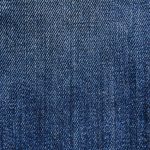Are you tired of constantly ironing your linen clothes or bedsheets? Do you wish you could keep them looking crisp and wrinkle-free for longer periods? You’re in luck because we’ve got some tips on how to keep your linen from wrinkling.
By following these easy steps, you’ll be able to enjoy the natural beauty of linen without worrying about the wrinkles.
Firstly, it’s important to choose high-quality linen. The quality of the fabric plays a significant role in how it will behave and how easy it is to maintain. Opt for linen that is made from long fibers and has a high thread count. This will ensure that the fabric is strong, durable, and less prone to wrinkling.
Once you have high-quality linen, you can take steps to wash it properly, iron it correctly, and store it in a way that prevents wrinkles.
Let’s dive into the details of each step to keep your linen looking its best.
Table of Contents
Choose High-Quality Linen
When it comes to keeping your linen wrinkle-free, it’s important to choose high-quality linen that won’t easily crease. This means selecting linen made from longer fibers, which tend to be stronger and more durable, resulting in less wrinkling. Look for linen with a higher thread count, as this indicates a tighter weave and less room for wrinkles to form.
In addition to choosing high-quality linen, make sure to properly care for your linens to reduce the likelihood of wrinkles. Avoid overloading your washing machine or dryer, as this can cause excessive wrinkling and damage to the fabric. Instead, wash your linens in small loads and use a gentle detergent to prevent damage to the fibers.
Make sure to store your linen properly to prevent wrinkles from forming. Fold your linens neatly and store them in a cool, dry place to reduce the risk of creases and wrinkles. Consider using a garment bag or storage container to keep your linens protected and wrinkle-free until you’re ready to use them again.
Proper Washing Techniques
When it comes to keeping your linen looking its best, proper washing techniques are key.
To start, always use cold water to avoid damaging the fibers and causing unnecessary wrinkling.
Additionally, it’s best to avoid using the dryer altogether, as the heat can further damage the linen and lead to more wrinkles.
Instead, opt for air-drying or hanging your linen out in the sun for a natural, wrinkle-free finish.
Use Cold Water
To prevent wrinkles in your linen, try using cold water when washing. It’s a simple step that will help your linen look crisp and fresh. Hot water can cause shrinkage and damage to the fibers in the fabric, leading to more wrinkles.
Cold water is gentler on your linen and will help it retain its shape and texture. When washing your linen, make sure to use a gentle detergent and avoid harsh chemicals that can damage the fabric. You can also add a cup of white vinegar to the rinse cycle to help remove any soap residue and keep your linen soft and smooth.
Remember to always follow the care instructions on your linen to ensure the best results and prolong the life of your favorite linens.
Avoid Using the Dryer
Opting for air-drying instead of using the dryer is a great way to preserve the quality of your linen and avoid unnecessary wear and tear. The heat and tumbling action of the dryer can cause the fibers in your linen to break down over time, leading to more wrinkles and a shorter lifespan for your linens. In addition, the high heat of the dryer can also cause shrinkage and damage to any delicate trim or embroidery on your linen items.
To air-dry your linen, simply hang your items outside on a clothesline or inside on a drying rack. Be sure to shake out your linens before hanging them to remove any excess water and prevent clumping. If you need your linen items to dry quickly, you can also hang them in a well-ventilated area or use a fan to help circulate air around them.
By avoiding the dryer and air-drying your linen instead, you can keep your linens looking crisp and wrinkle-free for years to come.
Ironing Techniques
To ensure your linen stays smooth and wrinkle-free, it’s important to use proper ironing techniques. First, use a damp cloth to lightly moisten the fabric and help prevent scorching.
Then, set your iron to a low heat setting to avoid damaging the delicate fibers. By following these simple steps, you’ll have crisp and polished linen in no time.
Use a Damp Cloth
By simply dampening a cloth and placing it over your folded linen, you can prevent those pesky wrinkles from ruining your outfit. Here are some tips on how to use a damp cloth to keep your linen looking crisp and wrinkle-free:
- Start by dampening a clean cloth with water. Make sure the cloth isn’t too wet, as excess moisture can damage the linen fibers.
- Lay your linen garment on a flat surface and smooth out any wrinkles or creases.
- Place the damp cloth over the garment, making sure it covers the entire surface area.
- Gently press down on the cloth to ensure it makes contact with the linen.
Leave the cloth on for several hours or overnight, allowing the moisture to penetrate the fibers and relax any wrinkles.
Using a damp cloth is a simple and effective way to keep your linen looking fresh and smooth. Unlike ironing, it doesn’t require any heat or special equipment, making it a convenient option for those on-the-go. Give it a try and see how it can transform your linen from wrinkled to polished in no time!
Iron on a Low Heat Setting
If you want your linen to look crisp and smooth, you should consider ironing it on a low heat setting. Linen is a delicate fabric that’s prone to wrinkles, so it’s important to iron it carefully.
A low heat setting will prevent the fabric from getting damaged and will also help to reduce the appearance of wrinkles. Make sure to use a steam iron and fill it with distilled water to prevent mineral buildup that can cause staining.
Before you start ironing, make sure your linen is completely dry. You can either air dry it or use a dryer on a low heat setting.
Lay the linen flat on the ironing board and start ironing from the center of the fabric and work your way out towards the edges. Always use a pressing cloth to protect the fabric from direct contact with the iron.
Take your time and be patient, as rushing through the process can cause more wrinkles. With a little bit of practice, you’ll be able to achieve that crisp, smooth look you’re after.
Folding and Storage
When storing your linen, remember to fold it neatly and place it in a cool, dry place to prevent wrinkles. A great way to fold your linen is by following these simple steps. First, lay your linen flat on a clean surface and smooth out any wrinkles. Then, fold it in half lengthwise and smooth out any wrinkles again. Finally, fold it in thirds and tuck any excess material under the folds. This method not only prevents wrinkles but also saves space in your storage area.
To further prevent wrinkles, it’s important to avoid overstuffing your linen into a small space. Instead, give your linen enough room to breathe and move around. This means not packing your linen too tightly in a drawer or shelf. You can also use storage containers or bags that allow for air circulation while keeping your linen protected from dust and other elements.
Lastly, avoid hanging your linen for long periods of time as this can cause stretching and wrinkles. However, if you do need to hang your linen temporarily, use padded hangers and avoid overcrowding to prevent any marks or creases. By following these simple steps, you can keep your linen looking fresh and wrinkle-free for longer periods of time.
| Tips | Explanation | |
|---|---|---|
| Fold neatly | Folding your linen neatly helps prevent wrinkles and saves space in your storage area. | |
| Avoid overstuffing | Give your linen enough room to breathe and move around to prevent wrinkles. | |
| Avoid hanging for long periods | Hanging your linen for too long can cause stretching and wrinkles. Use padded hangers if necessary. |
Use a Fabric Softener
One easy way to make your clothes feel softer and smell better is by using a fabric softener. Fabric softeners are designed to reduce static cling, make clothes feel softer, and leave a fresh scent on your clothes. When you use a fabric softener, your linen will be less likely to wrinkle because the fabric is more pliable and less likely to crease.
To use a fabric softener, simply add it to the rinse cycle of your washing machine. Make sure to follow the instructions on the fabric softener bottle to ensure you’re using the correct amount for your load size. You can also add fabric softener sheets to your dryer to help reduce static cling and keep your clothes smelling fresh.
If you prefer a more natural approach, you can also use vinegar as a fabric softener. Add a cup of white vinegar to the rinse cycle of your washing machine and your linen will come out feeling soft and smelling fresh. Vinegar also helps to remove any soap residue that may be left on your clothes, which can contribute to wrinkling.
So, the next time you do laundry, try using a fabric softener or vinegar to keep your linen looking its best.
Hang Linen to Dry
Hang your linen to dry for a fresh, natural feel and to prevent any damage that may occur in the dryer. When you remove your linen from the washing machine, gently shake it out to remove any excess water. Then, hang it up to dry using clothespins or a drying rack.
Make sure to hang your linen in a well-ventilated area to allow for proper air flow. Avoid hanging it in direct sunlight, as this can cause the fabric to fade. Also, avoid hanging it in a humid area, as this can cause the fabric to mildew.
Once your linen is dry, you can iron it to remove any remaining wrinkles. However, if you hang it up properly, you may find that the natural wrinkles in the fabric add character and charm to your linens.
With these tips, you can keep your linen looking new and fresh for years to come.
Wear Linen Mindfully
To truly appreciate the beauty of linen, savor the sensation of its airy texture against your skin. But while linen is a wonderful fabric to wear, it’s also notorious for wrinkling easily. To keep your linen clothing looking pristine, you need to wear it mindfully.
Firstly, avoid sitting for long periods of time in your linen clothing. The fabric is prone to creasing, and sitting only exacerbates the problem. Instead, try to stand or walk around as much as possible, or switch to a different outfit if you know you’ll be sitting for an extended period.
Secondly, be mindful of how you move in your linen clothing. Abrupt movements can cause wrinkles, so try to move in a smooth and fluid manner. When you pick something up, bend at the knees instead of at the waist. And when you sit down, do so gently, taking care not to scrunch up your clothing.
Choose your linen clothing wisely. Some linen fabrics are more prone to wrinkling than others, so opt for a higher-quality linen if possible. And if you know you’ll be in a situation where wrinkles are unavoidable, such as during travel, choose a different fabric altogether.
By wearing your linen clothing mindfully, you can keep it looking fresh and wrinkle-free for longer.
- Does Chiffon Fabric Stink - July 15, 2025
- Does Chiffon Fabric Affect the Economy - July 15, 2025
- Does Cotton Fabric Have a Nap - July 15, 2025






